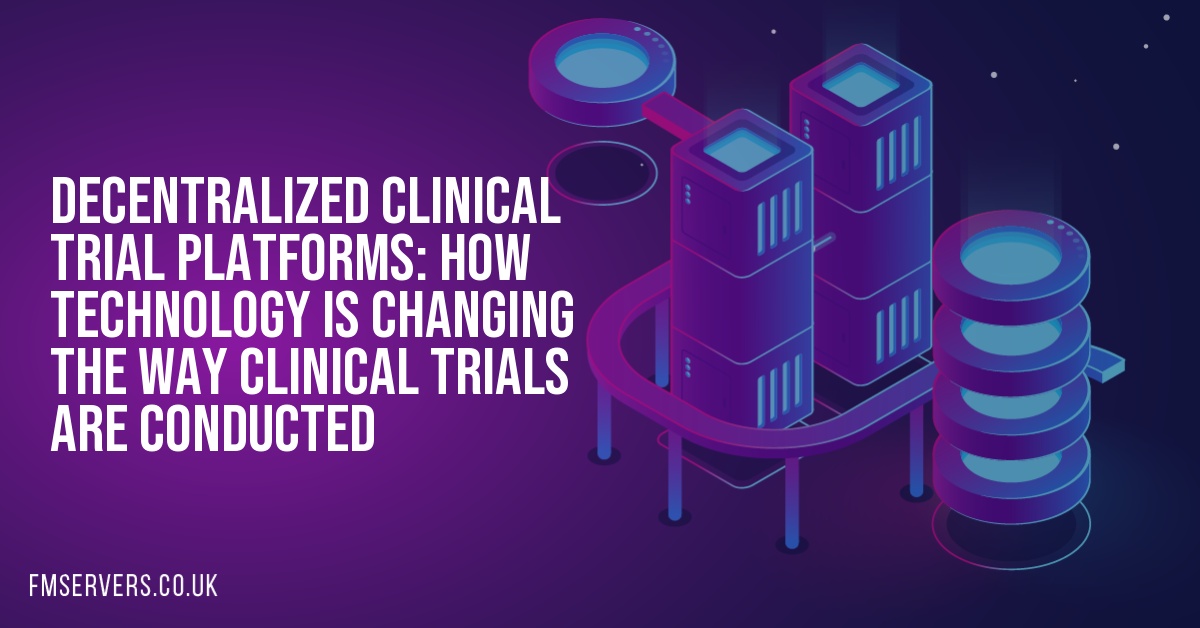Decentralized clinical trial platforms can help tidy up what can otherwise be a messy, inefficient, and time-intensive process. In this post, we’ll show you how a decentralized clinical trial platform could be the solution.
In this post, we’ll explain the purpose of a decentralized clinical trial platform and how they work. We’ll also cover some of the key features of a decentralized clinical trial platform and how that might help your organization.
So, if you want to learn more about how tech is changing the way clinical trials are conducted, read on.
What are Decentralized Clinical Trials?
Decentralized clinical trials (DCTs) are trials that are carried out through telemedicine and mobile healthcare workers using technologies, unlike the traditional clinical trial models.
Instead of conducting the trials at a site facility, it’s done remotely, and patients remain at home during the trial period. Interactions take place via phone applications, software and connected devices.
These devices give the sites and sponsors important clinical trial data, and at the same time, investigators can have face-to-face connections via technology.
As a result, DCTs are also referred to as remote trials, siteless clinical trials or virtual trials. However, at times, DCTs can involve other sites and facilities.
What differentiates this from the traditional clinical trials is that for the latter, the patients go to an on-site facility for screening and enrolment. Once enrolled, all interactions between the patients and healthcare providers happen on-site.
On the contrary, there are various interaction options for a decentralized trial. The most common one is the use of technology. This results in a potent and powerful trial that offers a flexible design.
Different Types of DCTs
There are two main types of decentralized clinical trials, and these include:
- Hybrid – in this trial, the participants go to an on-site facility for activities like screening and enrolment. However, the rest of the trial is done at home or remotely.
- Full-remote – for this trial, everything is done remotely, but the trial organizer works with the sites. The role of the organizer is to work closely with the patient’s shipping teams, nurse and other personnel to ensure the entire trial runs smoothly so that the patient never leaves home.
The Benefits of Decentralized Clinical Trials
Both the patients and sponsors of the trial benefit a lot from the process. However, the patients tend to benefit more because the trial is personalized to their flexibility. Let’s have a look at the major benefits of DCTs:
- Increased flexibility for the patients
The process is designed around a research centre for traditional clinical trials, where the clinical operations are monitored closely. Therefore, the trial participants must travel to the site and remain there throughout the study period. As a result, there’s a disruption in their daily activities.
The good thing about DCTs is that they use a patient-centred approach. This is achieved by using virtual tools such as technological devices and telemedicine to carry out visits and monitor data.
- Easier to recruit and retain patients
In most clinical trials, the dropout rate is usually high because most participants feel overwhelmed by the process. For successful patient retention, the researchers have to employ better mechanisms to keep them engaged and motivated during the entire trial.
Some factors, such as many scheduled on-site visits, increase the dropout rates. However, since DCTs are done at home, they relieve the patients stress by using telehealth for visits and data collection.
- Data diversity
DCTs tend to attract participants from diverse populations. That’s possible because the working mode decreases geographic barriers so that anyone can participate, including the elderly, ethnic minorities and those living in remote areas.
The Drawbacks of Decentralized Clinical Trials
One of the major drawbacks of DCTs is the increased risk of physical harm to the patients if they administer the trial medication wrongly.
Another disadvantage is that some participants might not comprehend the purpose of the study, leading to poor adherence and results.
DCTs can also be strenuous for the participants because they must constantly activate, charge, and put on digital sensors.
Do Decentralized Clinical Trial Platforms Stand a Chance in Future?
The answer is yes and no. Clinical trial sponsors are willing to adopt the hybrid protocols used for DCTs. They’re, however, more interested in the hybrid type, especially for patient monitoring and home nursing.
According to research experts, total decentralization of clinical trials may not be practical and suitable in most medical areas. There’s still a need for complex operations and medical imaging to be carried out in physical sites. Still, most operations may be decentralized to improve patient experiences and outcomes.

